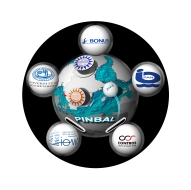Long-term alkalinity trends in the Baltic Sea - implications for CO2-induced acidification
The call of the Marine Strategy Framework Directive for measurements that allow tracing the impact of ocean acidification was one of the motivations for BONUS PINBAL. In order to better understand the magnitude of this problem, all available data on alkalinity were compiled and investigated within BONUS PINBAL. For the last 20 years, trend analysis unambiguously show an increase of alkalinity and thus buffer capacity of Baltic Sea surface waters, most pronounced in the northern and central basins.
Figure 1: Temporal development of alkalinty in the surface water of the central Baltic Sea, shown as deviation from the long-term mean. High data quality allow for the clear detection of a positive trend since the mid 1990s.
This trend considerably counterbalanced the potential for coastal acidification, caused by the uptake of anthropogenic CO2 from the atmosphere. It furthermore increases the uptake capacity for CO2 of the Baltic Sea and helps to stabilize the saturation state of calcium carbonate (Fig. 2). The results of this analysis and its implications for CO2-induced acidification in the Baltic Sea were published in a peer-reviewed journal by Müller et al. (2016).
Figure 2: Theoretical relative change of dissolved inorganic carbon DIC, proton concentration [H+] and calcium carbonate saturation ΩCaCO3 in the central Baltic Sea since 1995. Calculations are based on the known increase of atmospheric CO2 partial pressure and were performed with and without consideration of the observed change of alkalinity.

